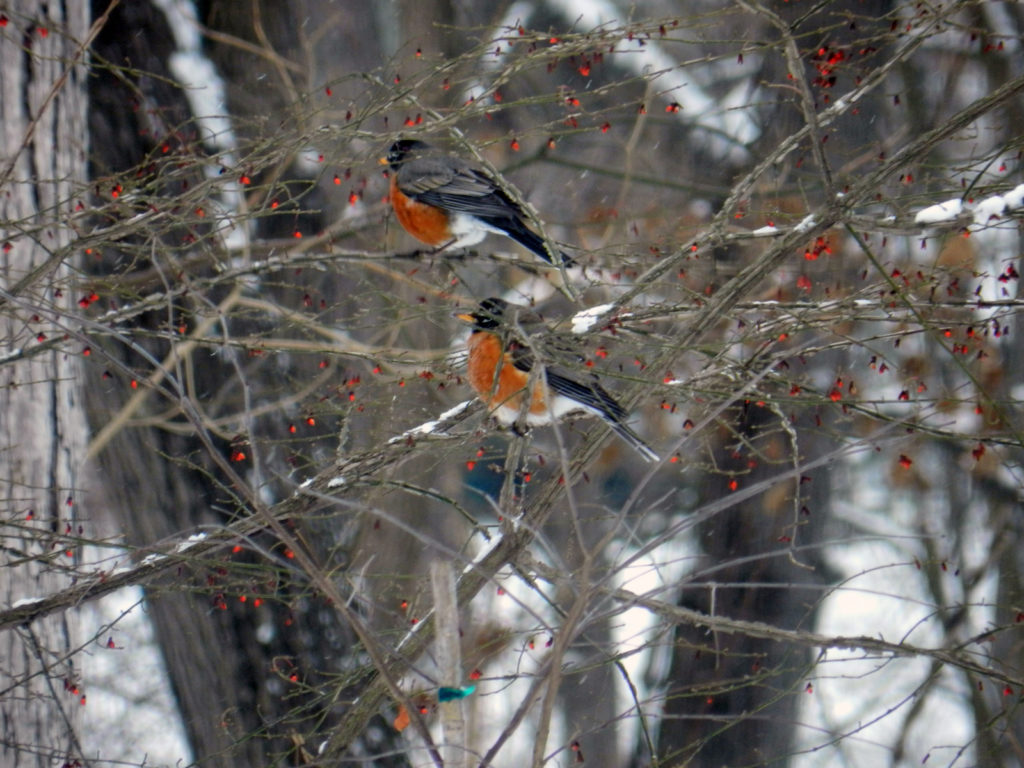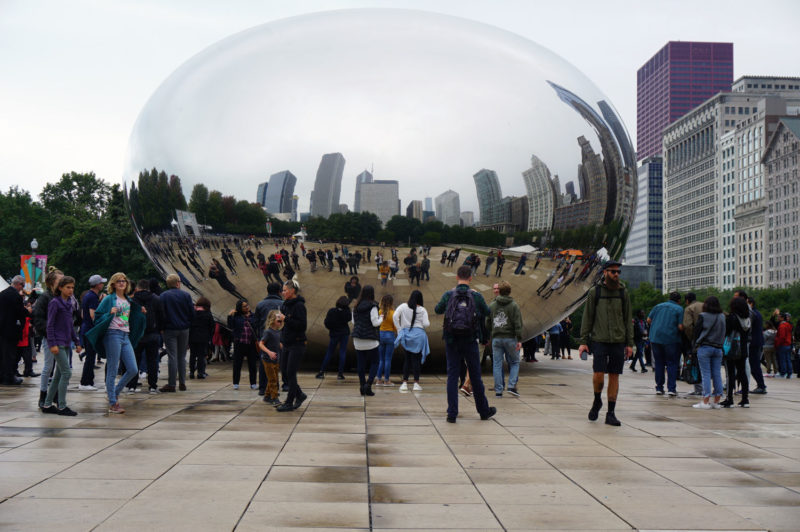
I looked out into the snowy woods and saw some robins in the burning bush. There were more than two. There were nearly too many to count. I stopped at fourteen.
I mentioned it to my mother, who said she’d learned a few years ago that “they don’t really go away.” I looked into it, and it’s true. The robin is a winter-hardy bird who retreats into the woods in cold weather, emerging on milder days in search of food. The robin doesn’t fly south for the winter. So, while seeing one is a sign of milder weather, it isn’t a reliable harbinger of seasonal change.
Nonetheless, the robin, with its red breast, has long connoted transformation. The symbolism of the robin originated on the other side of the Atlantic, with the American robin‘s European cousin. The European robin is smaller and looks more like a wren. Its face, neck, and breast bear a splash of orange-red. Centuries ago, the robin became symbolically associated with the Christian concept of rebirth, with believers imaginatively interpreting the bird’s red breast as a reminder of Christ’s passion (i.e., suffering) and blood-sacrifice.
Thus, as one website puts it, the sight of “our little red-breasted friends” signifies the coming of a “life-changing experience,” tacitly encouraging us to anticipate spring: to set aside grief, “uncover happiness,” and prepare to “move forward with determination and grace.”

Mr. C says
Interesting facts about our old friend, the robin. When I was little, it was probably the first bird my parents pointed out to me. I grew up in the Lincoln Park area very close to the Lake, at 3400 N. Sheridan Road. Right there at the intersection of Roscoe and Sheridan is a tunnel that goes under Lake Shore Drive, and thus one enters the park at a northern part of Belmont Harbor. Once in the park, my folks would point out the “common” robin, always easy to identify thanks to its red breast. In the winter, however, we wouldn’t see them. I don’t recall ever seeing one.
So, if they hang around and don’t go south like any smart bird would–where to they go?? Hibernate like a bear underground? Sleep until the weather gets warmer? I need to check out the habits of the bird in an Audubon book.
Celia says
I don’t really know the answer, but I think it possible that the birds could nest together (not necessarily in the city) in wooded areas. They could nest together in trees with holes and hollows. I don’t see robins in the winter, but even in Chicago, I have seen them on a February day, just on one of the milder days, feeding on the leftover fruit of a crabapple tree. Once they get refueled, they go back into hiding, and don’t come back for good until the ground is thawed.
This February, I saw them only fluttering around in the dormant burning bush. It too had tiny berries that perhaps the birds eat. I saw a variety of birds out one morning in February when snow was on the ground but it was just thawing. It’s like they blew across the yard and patio, foraging almost frantically in the bushes and trees for maybe tiny or even dead insects or little crumbs/seeds to keep them going for a little while until spring comes. They were all there for just a morning or two, then disappeared–the titmouse, robin, nuthatch, etc., they were all there–birds not flying through but that I will be seeing again later in the summer.